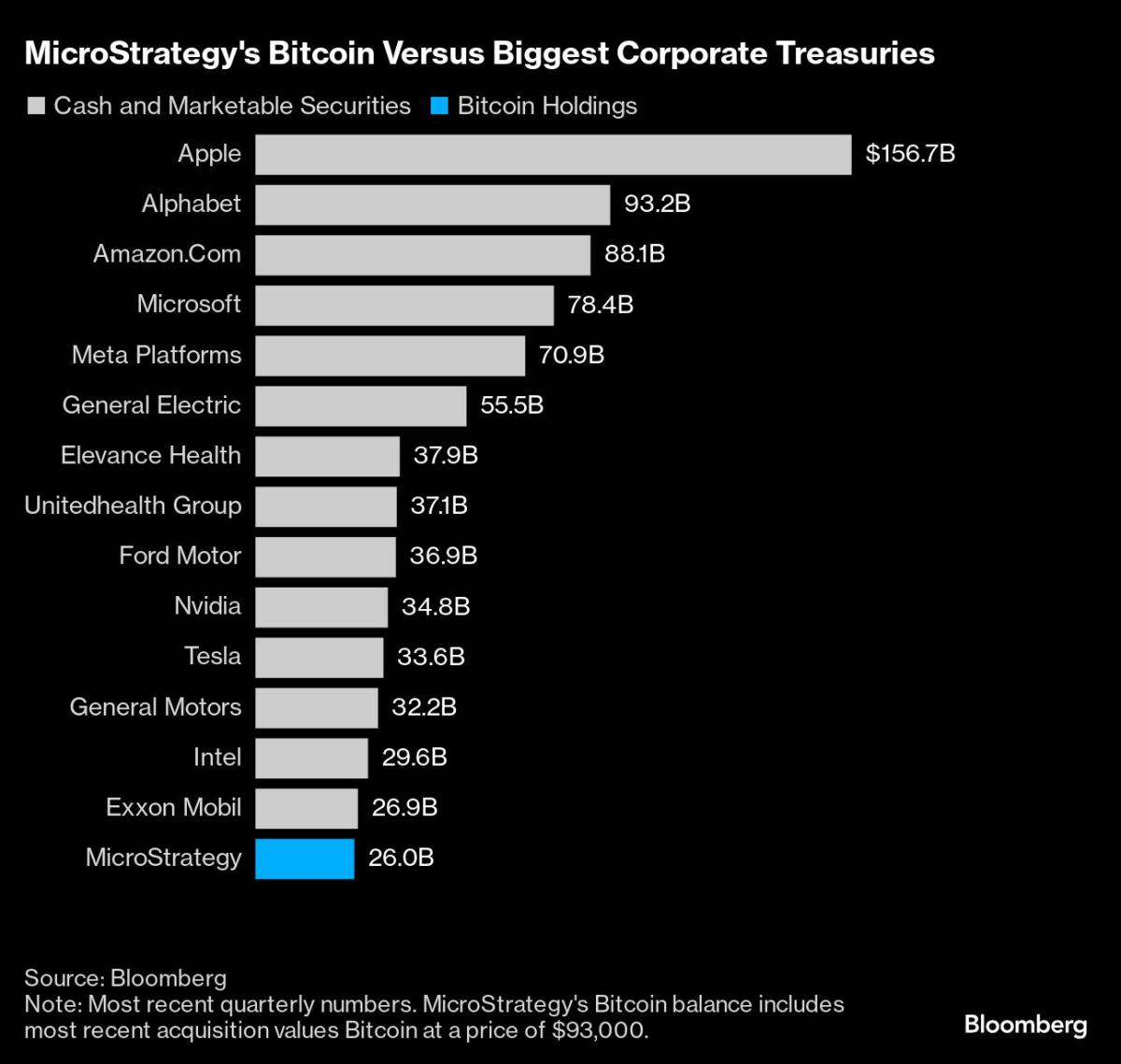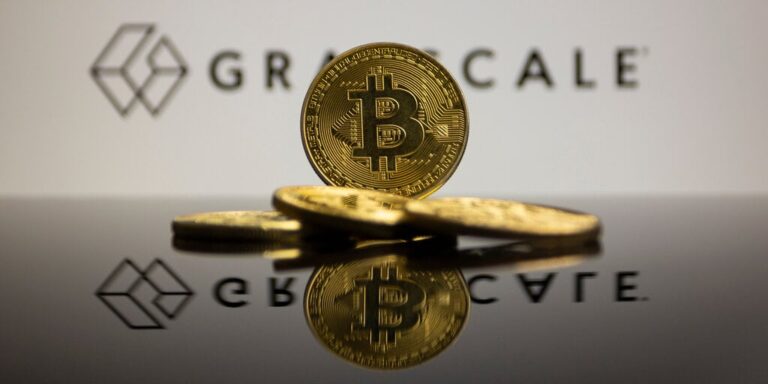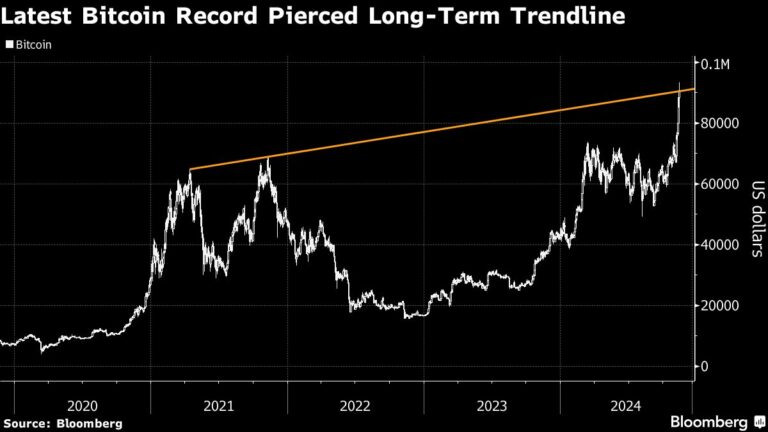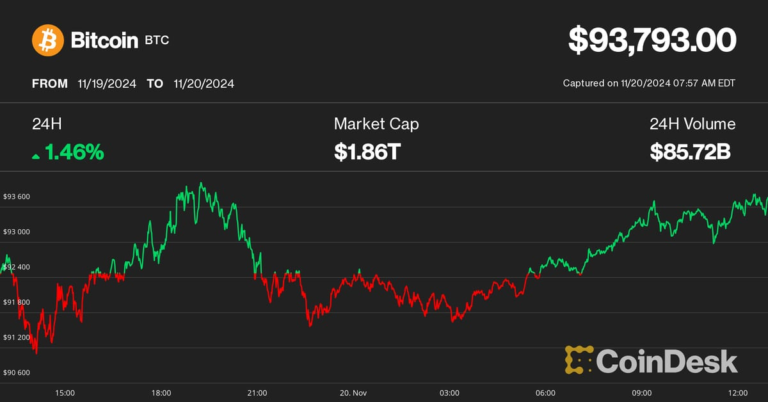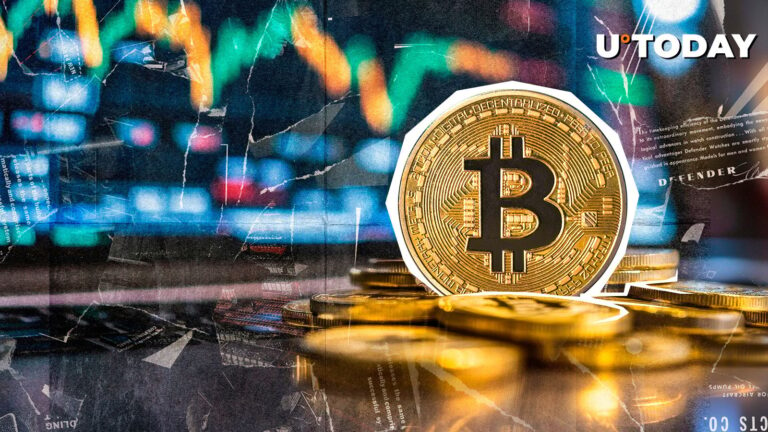[ad_1]
(Bloomberg) — Michael Saylor’s unorthodox decision to hold Bitcoin instead of cash on MicroStrategy Inc.’s books has vaulted the once obscure software maker into the upper echelon of the wealthiest corporations when it comes to financial assets.
Most Read from Bloomberg
Listen to the Here’s Why podcast on Apple, Spotify or anywhere you listen.
The Tysons Corner, Virginia-based firm’s approximately $26 billion Bitcoin cache is larger than the cash and marketable securities of global market leaders such as International Business Machines Corp., Nike Inc. and Johnson & Johnson, according to data compiled by Bloomberg. Only about a dozen companies, led by Apple Inc. and Alphabet Inc., hold more assets in their corporate treasuries.
Saylor, a co-founder and chairman, decided to invest in Bitcoin in 2020 as a hedge against inflation while MicroStrategy’s revenue growth stagnated. The firm initially used cash from operations to make the purchases, and has shifted to using the proceeds from the issuance and sale of stock, as well as convertible debt sales to leverage its buying power. It has become the largest publicly traded corporate holder of the digital currency.
While the strategy has drawn skepticism from traditional corporate governance observers, it has been embraced by investors as a leveraged way to participate in the Bitcoin rally without having to deal with digital wallets or crypto exchanges. The company’s shares have surged by over 2,500% as the value of Bitcoin has soared around 700% since the middle of 2020, making it the best-performing US major stock during the period. Bitcoin reached a record of almost $93,500 on Wednesday.
“Their balance sheet is primarily a function of the price of Bitcoin,” said Dave Zion, founder of Zion Research Group, a Chadds Ford, Pennsylvania-based firm that focuses on accounting and tax issues. “They’re not in control of the price of Bitcoin, so they’re just going to ride that wave, and it’s a wave that could go up or down.”
Most corporate treasurers use a company’s financial assets to support the business or generate returns, including to pay dividends or to fund share buybacks. Saylor has argued that shareholders benefit from the buy and hold strategy even though the company doesn’t pay a dividend.
[ad_2]
Source link

